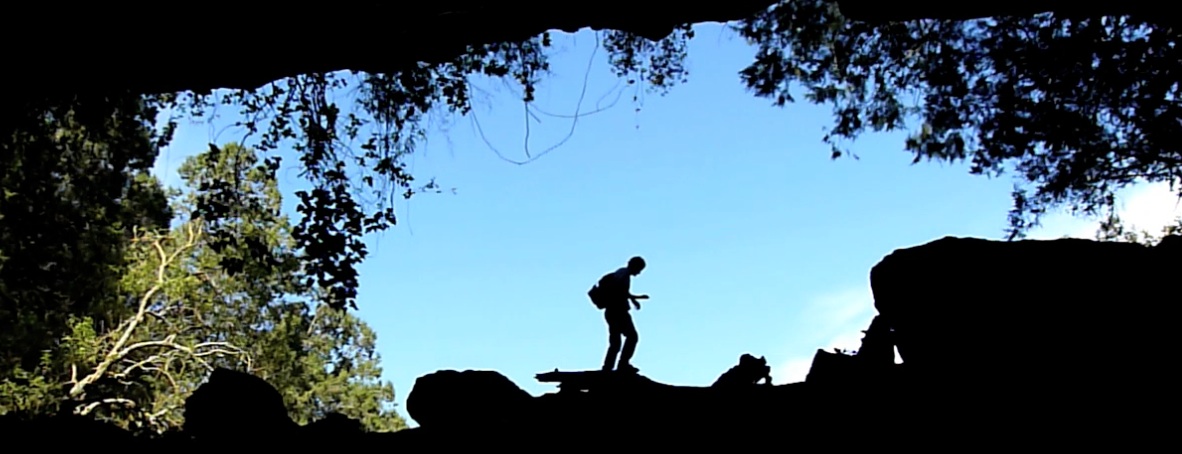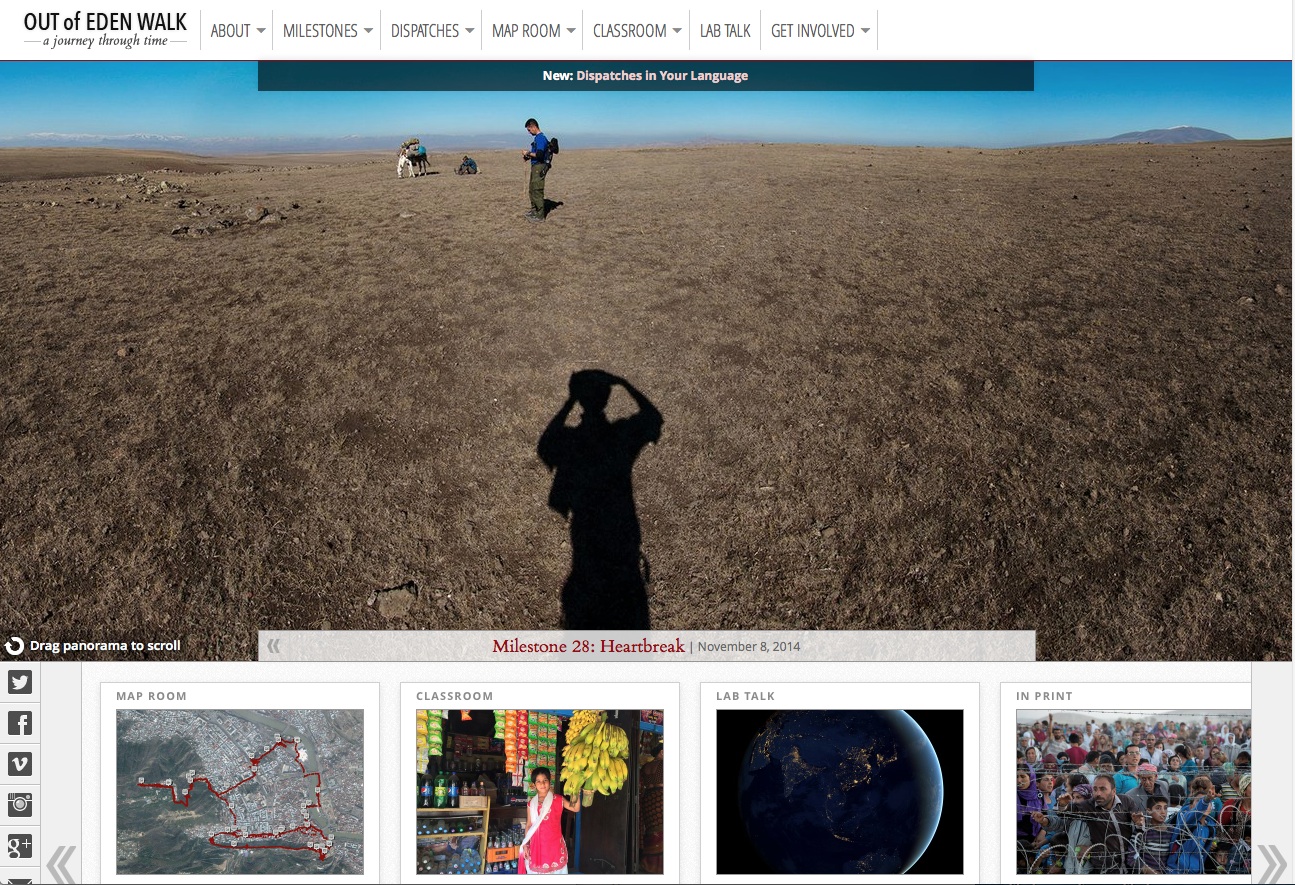Out of Eden Walk, Paul Salopek's 21,000-mile around-the-world journey, follows humanity's migration 'out of Eden' and offers a treasure trove of experiences for educators to share with their students. The Pulitzer Center has partnered with Paul Salopek on the project and provides educational resources as part of that partnership.
A two-time Pulitzer Prize winner and long-time practitioner of slow journalism for National Geographic and the Chicago Tribune, Salopek is reporting from the field using the latest in digital technology and communications, thus combining both ancient and ultra-modern methods of reportage.
Salopek's Walk is a particularly useful and beautiful example of slow journalism that renders the oldest story in human history using innovative digital tools of the twenty-first century. Educators can use the walk as a teaching tool, by exposing classrooms to the literary and visual delights of the project while having students design and implement a narrative walk of their own.
"Slow Journalism in a Fast World: The Out of Eden Experiment" is an intensive special topics seminar first offered in 2014 by Virginia Commonwealth University's Robertson School of Media and Culture. Taught by Don Belt, longtime editor and chief foreign correspondent for National Geographic, students developed their multimedia storytelling skills—and their slow journalism skills—by using Out of Eden Walk as a model. Belt's students applied the principles of slow journalism to semester-long narrative projects of their own, which were built on in-depth field reporting they accumulated on foot in and around historic Richmond, Virginia. Along the way, students practiced all aspects of digital storytelling: research, story development, pitching, reporting, writing, photography, cartography, videography, social media, web design, and platform building. Also because this was slow journalism, they created a uniquely perceptive record of their community, weaving in details that "fast" journalism would miss.
"What I'm using the walk for in my classroom is to teach students to first of all slow down. Then the next phase is to send them out into the community and doing the sort of in-depth interviewing and story telling that Paul is practicing. I want them to apply those lessons on a micro-scale in their own communities," Belt said in an introductory video for educators about Out of Eden Walk's applications in the classroom.
So far, we've mostly worked with secondary school students and educators. Now we're aiming to bring this amazing project to colleges in a more systematic way. The walk offers a unique window into early migration routes and modern day issues—a terrific resource for educators in wide-ranging fields: anthropology, geography, environmental science, religion, journalism and more.
When Salopek describes Out of Eden Walk as slow journalism, he means it literally: he is purposely traveling in the manner that early humans used to explore their world—on foot, one step at a time. After planning Out of Eden Walk for nearly two years, including in-depth research conducted during a Nieman Fellowship at Harvard, Salopek set out in January 2013 to trace the pathways of human migration out of Africa. He started from Herto Bouri, Ethiopia, where the earliest Homo sapiens site in Africa is being investigated by paleoanthropologist Tim White of the University of California, Berkeley. His final destination, Tierra del Fuego, Chile, lies at the southern- most tip of South America, where our ancestors finally arrived at land's end about 11,000 years ago.
Other resources on an expanded site developed by Salopek and his creative team in partnership with the Knight Foundation, National Geographic, Pulitzer Center, and Project Zero, include a fascinating interactive map room–complete with walking tours of major cities he has visited along his path and even a map of police stops and their degree of severity. The resources also include what Belt considers perhaps the "most lasting of the project's legacies"–the multimedia "Milestones" that Salopek records every 100 miles of his journey around the world. By the time he reaches Tierra del Fuego, Chile, in approximately five years, there will be 2,300 of these Milestones.
Belt's curriculum is available online. Let us know if you're interested in teaching the walk at your school too.









